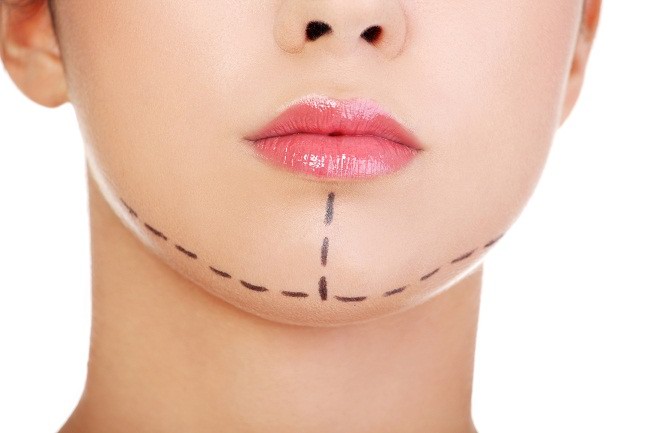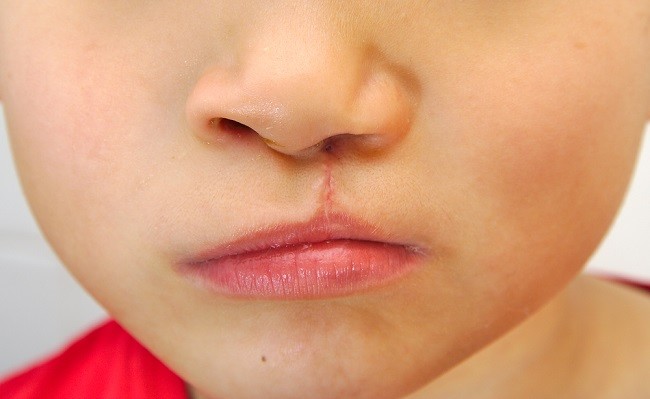Vasodilators are a class of drugs used to widen blood vessels, so that blood can flow more smoothly. Smooth blood flow will help reduce the workload of the heart in pumping blood.
Vasodilators work by relaxing blood vessel muscles. This class of drugs is often used in hypertension, preeclampsia, heart failure, angina, cardiomyopathy, subarachnoid hemorrhage, Raynaud's syndrome, or diabetic nephropathy. Some examples of drugs that fall into the vasodilator class are calcium antagonists, nitrates, and ACE inhibitors.

Precautions Before Using Vasodilators
Vasodilators are prescription drugs that are only used as prescribed by a doctor. Before using a vasodilator, there are several things you need to pay attention to, including:
- Tell your doctor about any allergies you have. Vasodilators should not be used in patients who are allergic to this drug.
- Tell your doctor if you are taking or taking certain medications, supplements, or herbal products.
- Do not engage in activities that require alertness, such as driving, while on treatment with vasodilators. This is because this drug can cause dizziness.
- Tell your doctor if you have or are currently suffering from hypotension. This is because vasodilators have a blood pressure lowering effect which can make your hypotension worse.
- Perform routine examinations according to the schedule given by the doctor while undergoing treatment with vasodilators.
- Tell your doctor if you are pregnant, breastfeeding, or planning a pregnancy.
Side Effects and Dangers of Vasodilators
There are several side effects that can arise from the use of vasodilators, namely:
- Low blood pressure (hypotension)
- Fluid retention which can cause edema
- Fast heartbeat (tachycardia)
- Heart palpitations (palpitations)
- Nauseous
- Throw up
- Stomach pain
- There is a feeling of heat and redness on the skin (flush)
- Headache
- Excessive hair growth
- Cough
- Joint pain
- Chest pain
Check with your doctor if the above side effects appear. You should also see a doctor immediately if you have an allergic reaction to the drug after using a vasodilator.
Types and Trademarks of Vasodilators
The following are the types of drugs that are included in the vasodilator group, equipped with trademarks, as well as doses that are adjusted to the patient's condition and age:
1. Angiotensin converting enzyme inhibitors (ACE inhibitors)
This drug works by inhibiting the activity of the ACE enzyme, thereby reducing the production of the chemical angiotensin, which can constrict blood vessels. Examples of ACE inhibitors are:
Captopril
Drug form: tablet
Trademarks: Acepress, Captopril, Dexacap, Etapril, Farmoten, Forten, Otoryl, Prix, Tensicap, Tensobon, Vapril
To find out the dosage and more information about this drug, please visit the captopril drug page.
Lisinopril
Drug form: tablet
Trademarks: Inhitril, Interpril, Lapril, Lisinopril Dihydrate, Noperten, Nopril, Odace, Tensinop, Tensiphar, Zestril
To find out the dosage and more information about this drug, please visit the lisinopril drug page.
Perindopril
Drug form: tablet, film-coated tablet
Trademarks: Bioprexum, Coveram, Cadoril
To find out the dosage and more information about this drug, please visit the perindopril drug page.
Ramipril
Drug form: tablet, caplet
Trademarks: Tenapril, Prohytens, Vivace, Hyperil, Triatec, Ramipril, Remixal, Cardace, Anexia, Decappril
To find out the dosage and more information about this drug, please visit the ramipril drug page.
Enalapril
Drug form: tablet
Trademarks: Tenaten, Tenace
- Condition: Heart failure
Adults: 2.5 mg–40 mg daily, 1 or 2 times daily.
- Condition: Hypertension
Adults: 5 mg–40 mg daily, 1 or 2 times daily.
Children weighing 20–50 kg: 2.5 mg–20 mg, once daily.
Trandolapril
Drug form: tablet
Trademark: Tarka
- Condition: Hypertension
Adults: 0.5–4 mg daily, 1 or 2 times daily.
- Condition: After a heart attack
Adult: 0.5–4 mg once daily, starting 3 days after attack.
2. Angiotensin II receptor blockers (angiotensin receptor blockers) or ARB
This drug serves to dilate blood vessels by blocking angiotensin from sticking to the blood vessel muscles. Examples of ARB drugs are:
Candesartan
Drug form: tablet
Trademarks: Candefion, Candesartan Cilexetil, Quatan, Canderin, Blopress Plus, Candapress, Unisia, Candotens, Canidix
To find out the dosage and more information about this drug, please visit the candesartan drug page.
Irbesartan
Drug form: tablet
Trademarks: Tensira, Nortens, Irvell, Irvask, Irtan, Iretensa, Irbeten, Irbesartan, Elzar, Aprovel
To find out the dosage and more information about this drug, please visit the irbesartan drug page.
Telmisartan
Drug form: tablet
Trademark: Micardis
To find out the dosage and more information about this drug, please visit the telmisartan drug page.
Valsartan
Drug form: tablet
Trademarks: Diovan, Exforge, Valesco, Varten
To find out the dosage and more information about this drug, please visit the valsartan drug page.
Losartan
Drug form: tablet
Trademarks: Santesar, Lifezar, Insaar, Acetensa, Angioten
To find out the dosage and more information about this drug, please visit the Losartan drug page.
Eprosartan
Drug form: film-coated tablet
Trademark: Teveten
- Condition: Hypertension
Adults: 400–800 mg daily, 1 or 2 times daily.
Olmesartan
Drug form: film-coated tablet
Trademarks: Olmetec, Normetec
- Condition: Hypertension
Adults: 10–40 mg once daily.
Children aged 6–16 years weighing <35 kg: 10 mg once daily.
3. Calcium antagonist (calcium channel blockers) or CCB
In general, calcium is used by the muscle cells of the arteries in the process of muscle contraction. This drug works to block calcium from entering muscle cells, so that the muscle blood vessels will become weak. Examples of CCB drugs are:
Amlodipine
Drug form: tablet
Trademarks: Amovask, Quentin, Amlodipine Besilate, Amlodipine Besylate, Concor AM, Normetec, Simvask, Zenovask, Comdipin, Norvask
To find out the dosage and more information about this drug, please visit the amlodipine drug page.
Diltiazem
Drug form: tablet, capsule, injection
Trademarks: Cordila SR, Dilmen, Diltiazem, Farmabes, Herbesser
To find out the dosage and more information about this drug, please visit the diltiazem drug page.
Nifedipine
Drug form: tablet
Trademarks: Nifedin, Farmalat, Calcianta, Adalat
To find out the dosage and more information about this drug, please visit the nifedipine drug page.
nicardipine
Drug form: injection
Trademarks: Tensilo, Nicardipine HCl, Verdif, Carsive, Blistra. Nicarfion, Quadipine, Perdipine, Nicardipine Hydrochloride, Dipitenz, Nidaven, Nicafer.
To find out the dosage and more information about this drug, please visit the nicardipine drug page.
Verapamil
Drug form: tablet
Trademarks: Verapamil, Tarka, Isoptin.
To find out the dosage and more information about this drug, please visit the verapamil drug page.
Nimodipine
Drug form: film-coated tablet, infusion
Trademarks: Ceremax, Nimotop, Nimodipine G, Nimox
- Goal: Prevention of neurologic deficit after subarachnoid hemorrhage
Adult: 60 mg tablet every 4 hours, starting 4 days postpartum and continued for the next 21 days on a regular basis.
4. Nitrates
Nitrates will be converted by the body into nitrogen monoxide (NO), which is a chemical that can activate other chemicals to dilate arteries and veins. Examples of nitrates are:
Glyceryl trinitrate (nitroglycerin)
Drug form: oral tablet, sublingual tablet, injection
Trademarks: DBL Glyceryl Trinitrate Concentrate Injection, Glyceryl Trinitrate, NTG, Nitral, Nitrocaf Retard.
To find out the dosage and more information about this drug, please visit the nitroglycerin drug page.
Isosorbide mononitrate
Drug form: tablet, film-coated tablet
Trademarks: Casdimo, Imocard SR, Imdur
To find out the dosage and more information about this drug, please visit the isosorbide mononitrate drug page.
Isosorbide dinitrate
Drug form: oral tablet, sublingual tablet, and injection
Trademarks: Cedocard, Farsorbid 5, Isorbid, Isosorbide Dinitrate, Isonat, Monecto 20, Nosorbid
To find out the dosage and more information about this drug, please visit the isosorbide dinitrate drug page.









